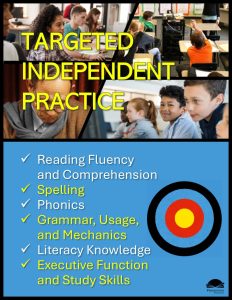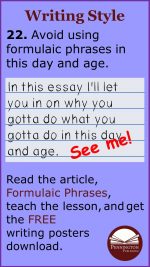Targeted Independent Worksheets | Literacy Knowledge
Should teachers use worksheets to teach and practice literacy knowledge? Yes! If you’re familiar with the science of reading and Dr. Scarborough’s famous reading rope, you might recall that literacy knowledge is listed as a key component of the upper language comprehension strand of the rope (the lower strand is word recognition). Literacy knowledge refers to a reader and writer’s knowledge of genre, such as a mystery novel or argumentative essay. Literacy knowledge also refers to literary elements featured in those genre, such as metaphors or personification. Finally, literary knowledge refers to text features, literary and poetic devices and structures, such as theme or expository paragraph organization.
But doesn’t literacy knowledge best lend itself to direct, explicit, whole-class instruction? I would agree, but students best understand retain what they are learning through targeted practice. Often a teacher will use novels, short stories, or articles to teach genre, literary elements, text features and structures. A conscientious teacher may have time to teach a dozen genre in a given year; however, to build literacy knowledge many more are necessary to explore. Targeted independent worksheets provide the best means of providing comprehensive instruction and practice on the breadth of literacy knowledge.
And, despite what we’ve been told to believe, there’s nothing bad about a good worksheet! Check out what Dr. Tim Shanahan, Professor Emeritus University of Chicago and Research Lead on the National Reading Panel, has to say…
Like most professors, I have long looked askance at worksheets and their role in reading instruction (though I had relied upon them as a teacher). These newer studies (e.g., Amendum, et al., 2024), suggest that they are not as bad as we have been led to believe (Taylor, et al., 2005). Good teachers often use a mix of direct instruction along with some practice sheets.
The study Dr. Shanahan refers to (Amendum, et al., 2024) “…was a correlational study, which identified how time was spent in classrooms and its relationship to learning to read. It found that the most effective teachers were using a combination of authentic texts and worksheets, etc. Unlike in some past studies, there was no particular benefit to using one type of material over another — in other words, they did see some learning gains due to use of seatwork (worksheet) activities” (Shanahan’s Comments).
Of course we all believe that direct, explicit, whole-class instruction should be our priority, but some small group and individualized work is necessary to differentiate instruction, and it certainly makes sense that the independent worksheets and/or activities we use in our classrooms can help maximize learning.
I’ve found that independent practice, targeted to specific, diagnostically assessed literacy deficits, gets the best results. And worksheet practice should conclude with formative assessment to determine mastery of the practiced concept or skill.
Literacy Knowledge is particularly well-suited to diagnostic differentiation and independent practice. My affordable program includes a short diagnostic, concise definitions, clear examples, and connected reading and writing practice. You don’t need to teach an entire novel to teach the science fiction genre. Here are 20 literary genre with all the grade-level standards dealing with text features, literary and poetic devices and structures. I invite you to check out the entire affordable program. Grades 4 on up.

Targeted Independent Practice
My Targeted Independent Practice series supports teachers with quality assessment-based independent learning. Each program includes 1. A comprehensive diagnostic assessment to determine student needs 2. Targeted worksheets corresponding to the specific diagnostic test components 3. Formative assessments to determine mastery. View each program in its entirety.
*** Reading Fluency and Comprehension
*** Grammar, Usage, and Mechanics
*** Executive Function and Study Skills
Not sure if your students need interventions? Download the free Targeted Independent Practice Diagnostic Assessments and let the data inform your instructional decision-making.




